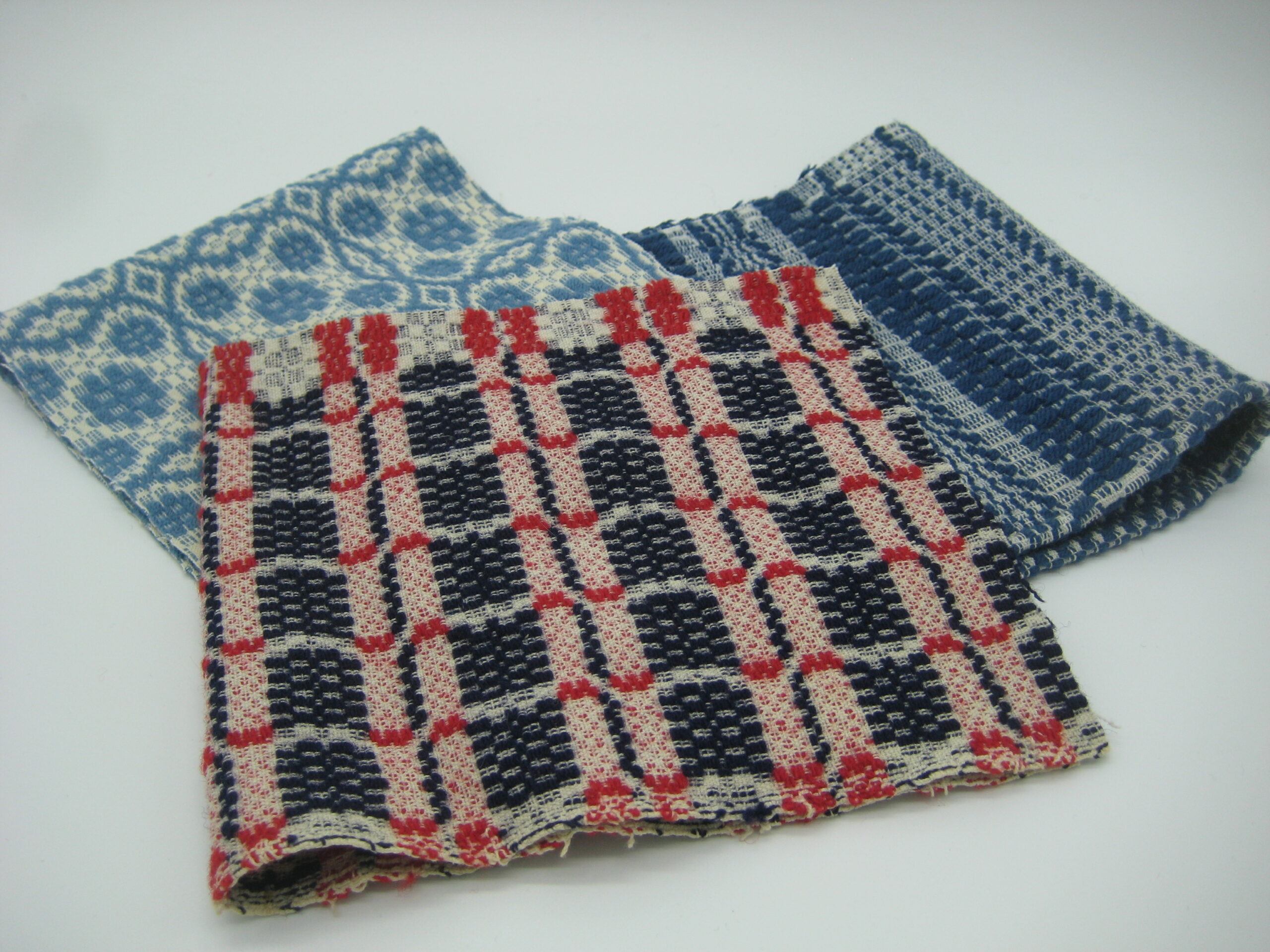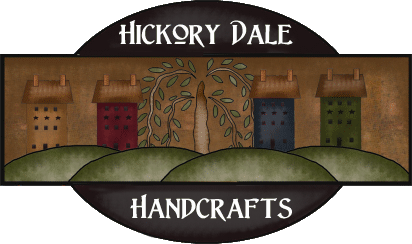About the Materials we Use
Vintage materials are often used in the production of items available at Hickory Dale Handcrafts.
Here is a little bit of history regarding some of the favorite items used most often.
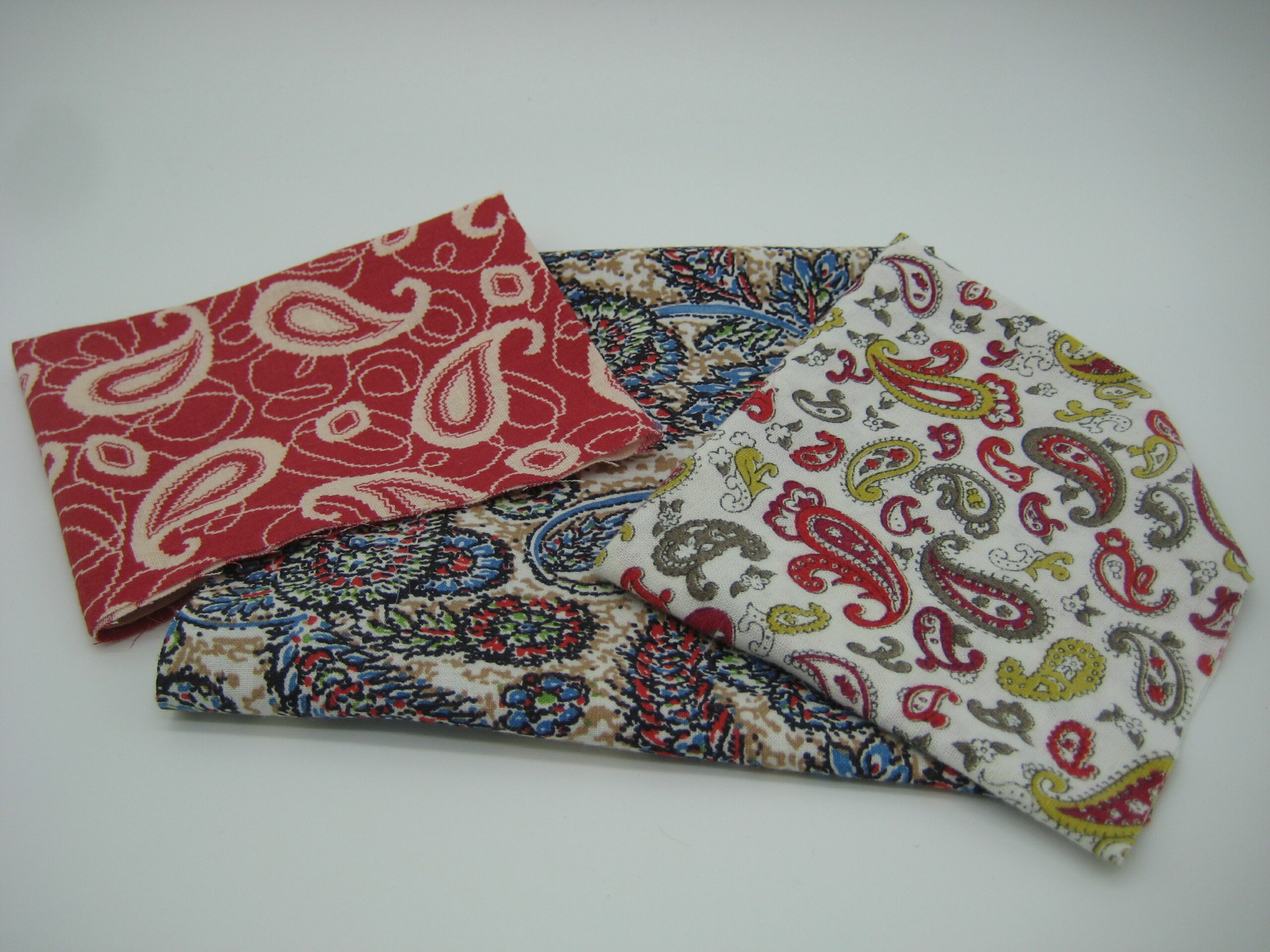
Flour Sack Fabrics
During the Great Depression, flour came in sewn cotton sacks. Since times were lean, women began using these sacks in many innovative ways, often cutting and re-sewing them to make clothing for themselves and their children. When the flour sack manufacturers became aware of the practice, they began to design the sacks in pretty patterns using ink that would hold up in washing detergent.
There were many bright and colorful designs, including patterns for use in making toys and common household products such as kitchen towels. As their popularity grew, booklets were produced with ideas for even more uses of things that could be made with the cotton bags.
When the flour sack clothing wore out, it was then re-purposed into other items, such as quilts. During World War II, cotton was rationed in order to make soldiers’ uniforms and, consequently, flour began to be packaged in paper bags.
Hammered Aluminum
The craze for hammered aluminum most likely began during the 1920s. In the following three decades, when these decorative items were used, women were expected to be proficient in the art of entertaining. In making serving pieces for hostesses of the time, aluminum was cheaper to use than silver, light weight and the items never needed polishing. Hundreds of designs and shapes were possible.
A sheet of aluminum was cut, dies were used to create the designs, pieces were hammered by hand, then shaped. Eventually, many pieces were mass produced by machine, so the most desirable pieces were those with the name of the manufacturer, its hallmark and often a number as well as the term, “Hand Hammered” or “Hand Wrought” stamped onto the back of the aluminum piece.
Trays, coasters, serving dishes, ice buckets, silent butlers, napkin holders, toast tongs, ice tongs and sugar cube tongs were the most popular items produced.
The down side of aluminum was that the pieces tended to dent or scratch with heavy use. Metals were scarce during World War II and housewives wanted a more modern look in their housewares, so by the mid-1950s, hammered aluminum fell out of favor.
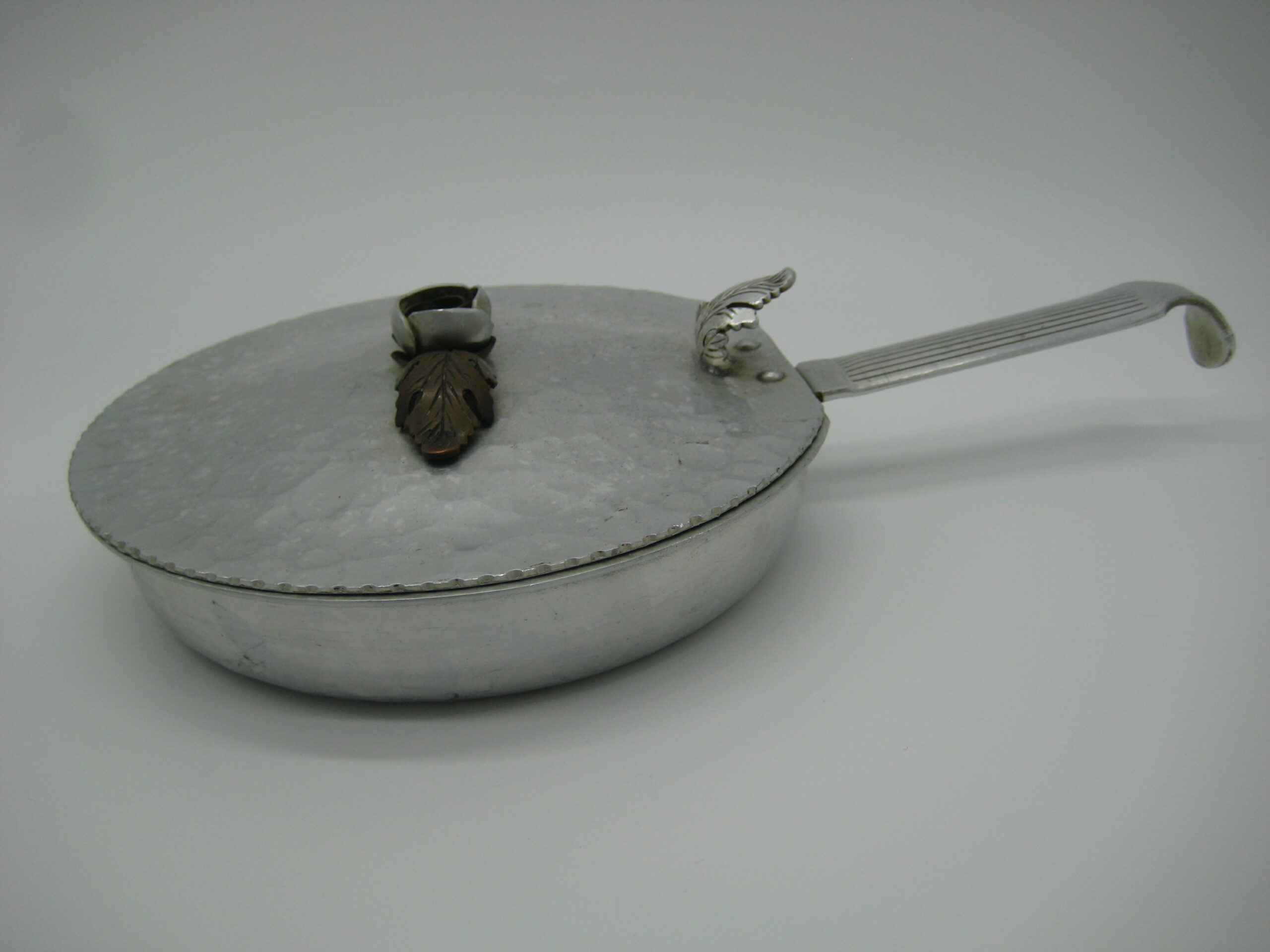
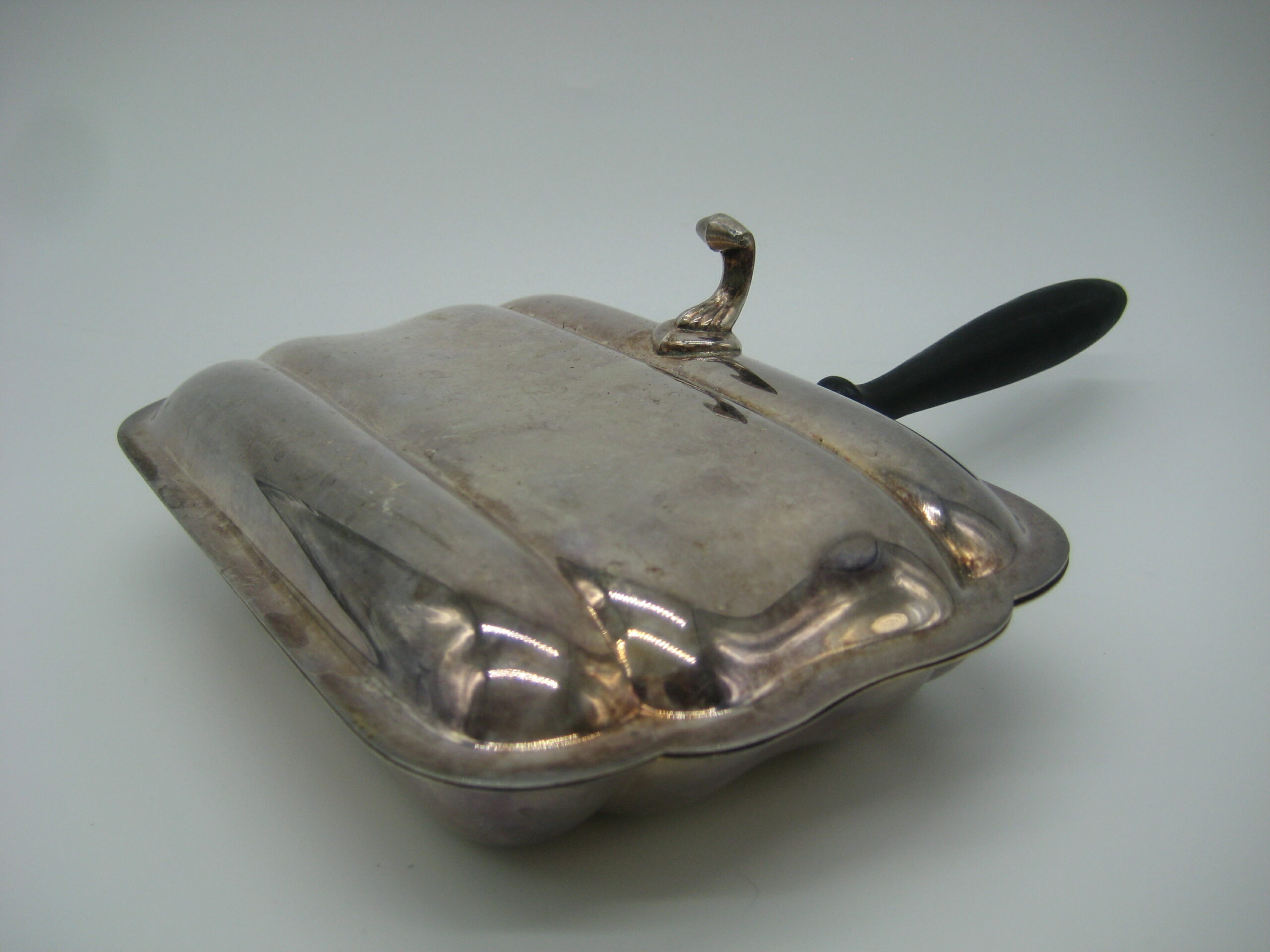
Silent Butler
The Silent Butler was a simple, covered receptacle that was used to clean up small debris such as crumbs, dust or ashes. It was used much like a dust pan is today. The first known use of the Silent Butler in the United States was 1937. They were available in chrome, brass or bronze, and many had ornate trim. Handles made them convenient for quick clean-ups. Although intended for everyday tasks, some were made of expensive materials for households that could afford such an upgrade. Tiffany & Company
produced a sterling silver Silent Butler in 1961. Today they are considered collectors’ items and are valued for their vintage appeal.
Textile Mill Bobbins
A noteworthy invention of the Victorian era occurred in the textile mills. Bobbins and the machines that they were designed to fit revolutionized textile manufacturing during the Industrial Revolution. Developed as a way to control large quantities of thread and feed it into sewing and embroidery machines, bobbins were a fairly simple invention with very large and financial repercussions. Many textile mills had their own machine shops and their own unique bobbin shape. This is why Textile Mill Bobbins are available in a variety of shapes.
Traditional wooden bobbins have been retired from modern textile production. Modern economics does not favor the use of wooden bobbins, since a large amount of handwork went in to making them. Also, they are not well suited for synthetic fibers and modern high-speed machinery. Primarily made from ash, birch and other hard woods, old Textile Mill Bobbins are full of history and character. Each one displays its own “battle scars,” providing a unique appearance and individual character.
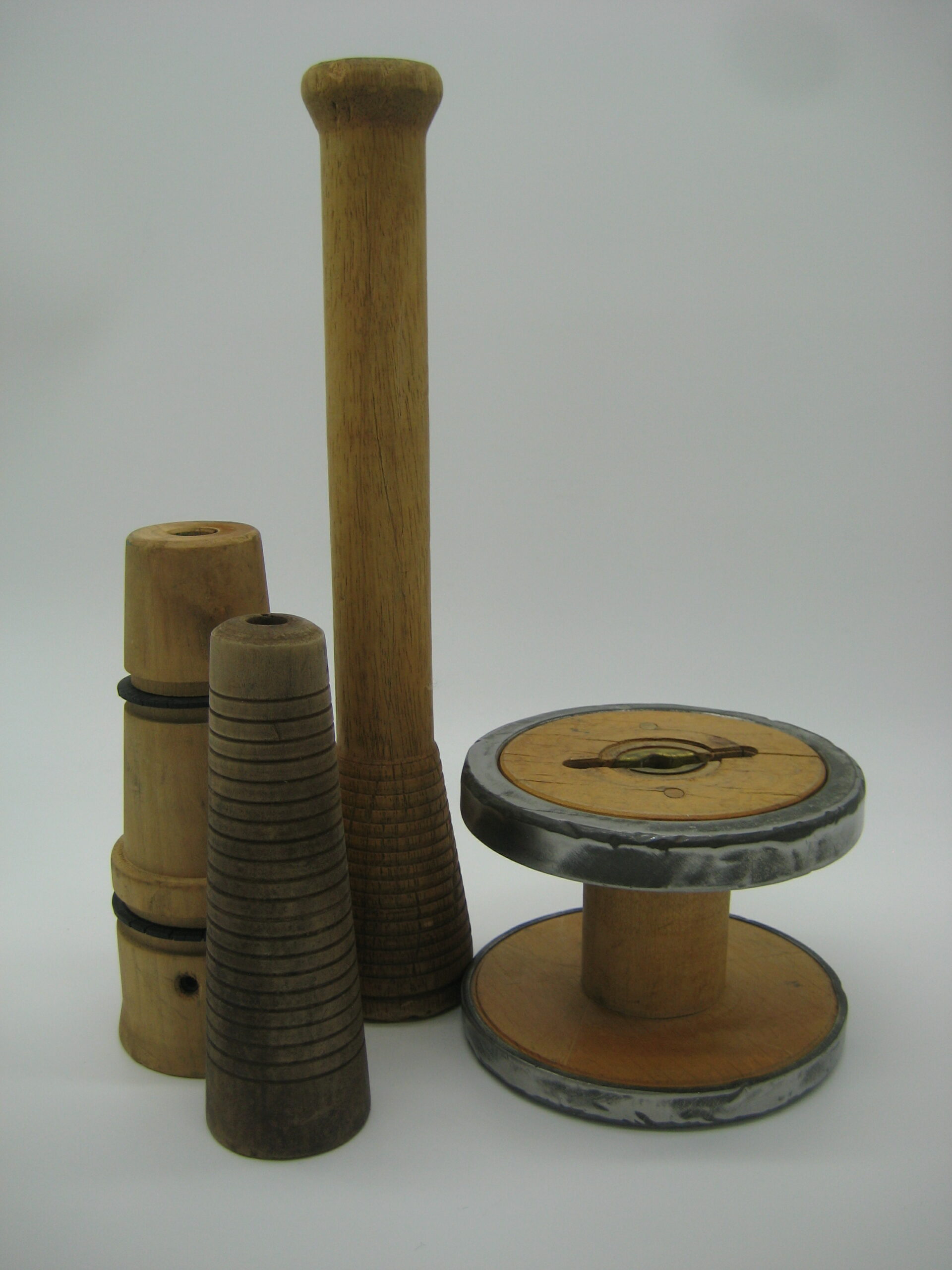
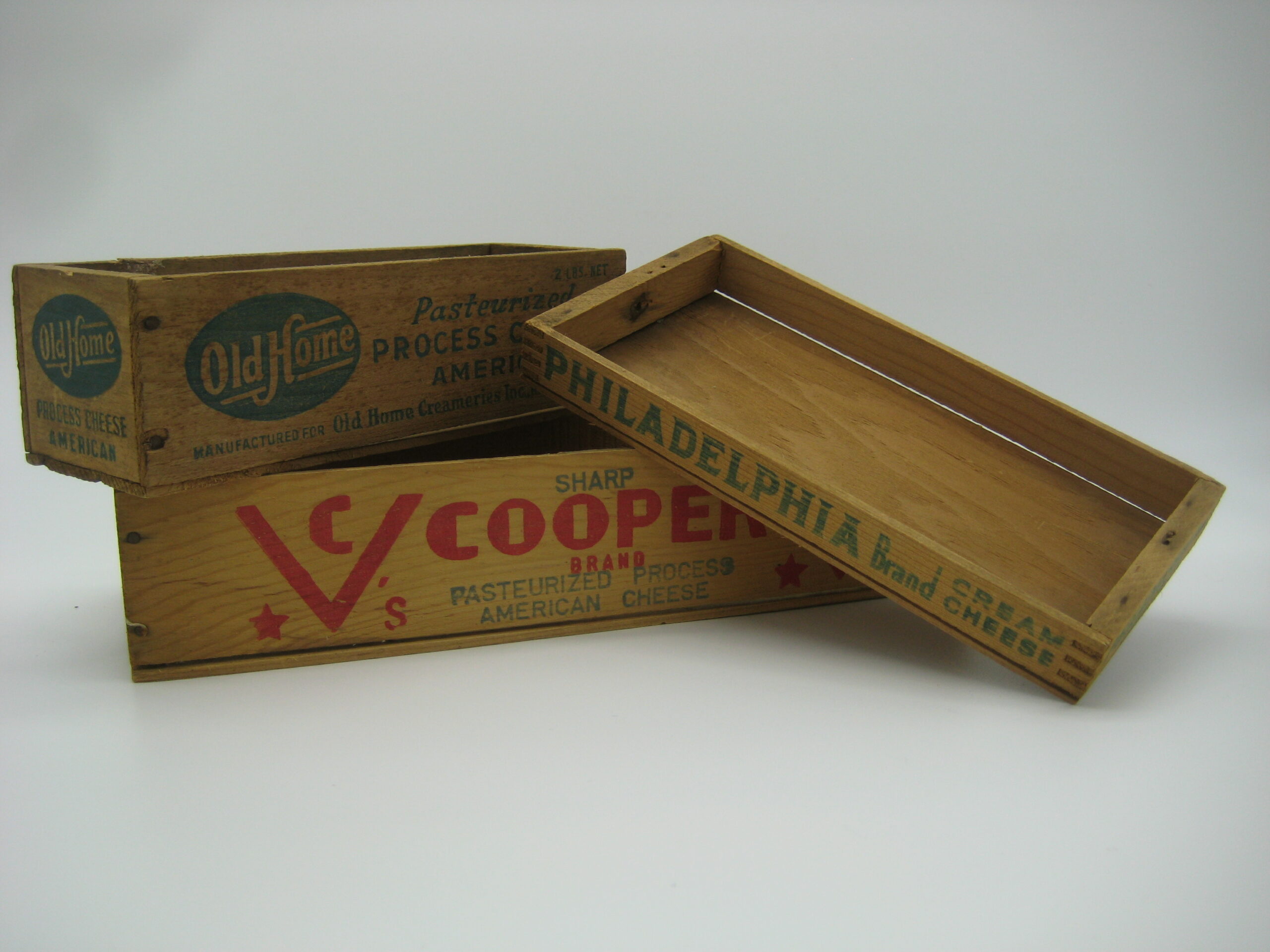
Wooden Cheese Box
Long before cardboard was used as a container for cheese to be transported from the producer to the retailer, these wooden boxes were used. They protected the cheese and provided a convenient way for the cheese to travel. Once arrived at the store, the large cheese would be sliced to order by the butcher or deli worker.
The box was opened by removing its top or bottom and removing the large, cellophane-wrapped cheese. In 1921, demand was so high that the Kraft Company was producing 15,000 boxes each day. Boxes were usually rectangular or round, depending on the type of cheese that was made.
Woven Coverlet
A coverlet is a handwoven cover for a bed where the pattern is made as the cloth is woven. Weavers wove the fabric to be both warm, durable and decorative. Home production of coverlets was an economic necessity for early Americans, since fabrics were an important possession. Bed coverings – their design, choice of threads and quality of workmanship -- eventually becoming a status symbol. Most coverlets that still exist today were woven during the 1800s to the early 1900s.
Very early coverlets were woven using handspun linen warp and a coarse woolen weft, known as “linsey-woolsey”. After the invention of the cotton gin, linen was replaced with inexpensive and stronger cotton thread. Most home woven coverlets were produced through the mid to later 1800s on narrow looms, producing panels 24” to 36” wide. These panels were then sewn together to make coverlets wide enough to cover a bed. The introduction of the Jacquard Loom and the beginning of the Industrial Revolution paved the way for professional weavers and brought much of the coverlet production out of the home. Most vintage coverlets come from the mid-Atlantic states, New England or the Midwest.
